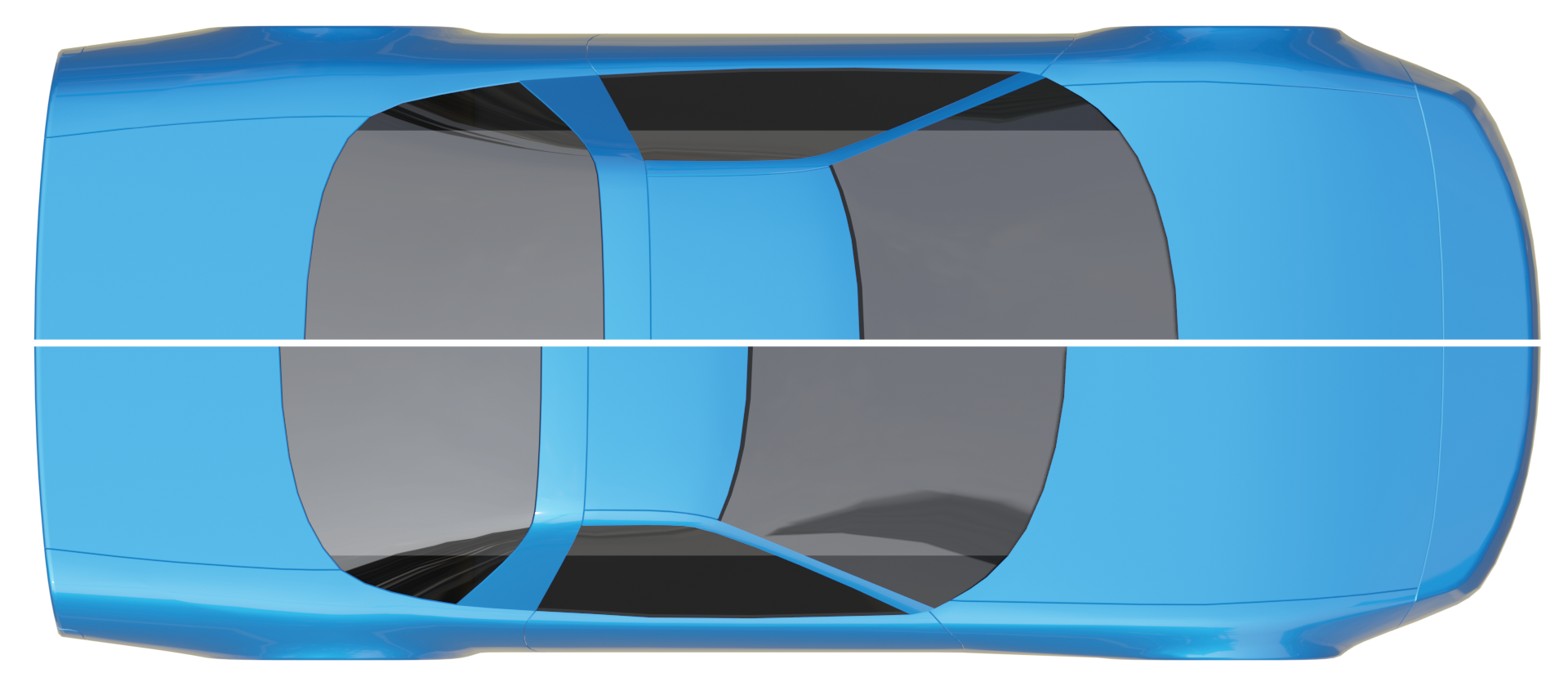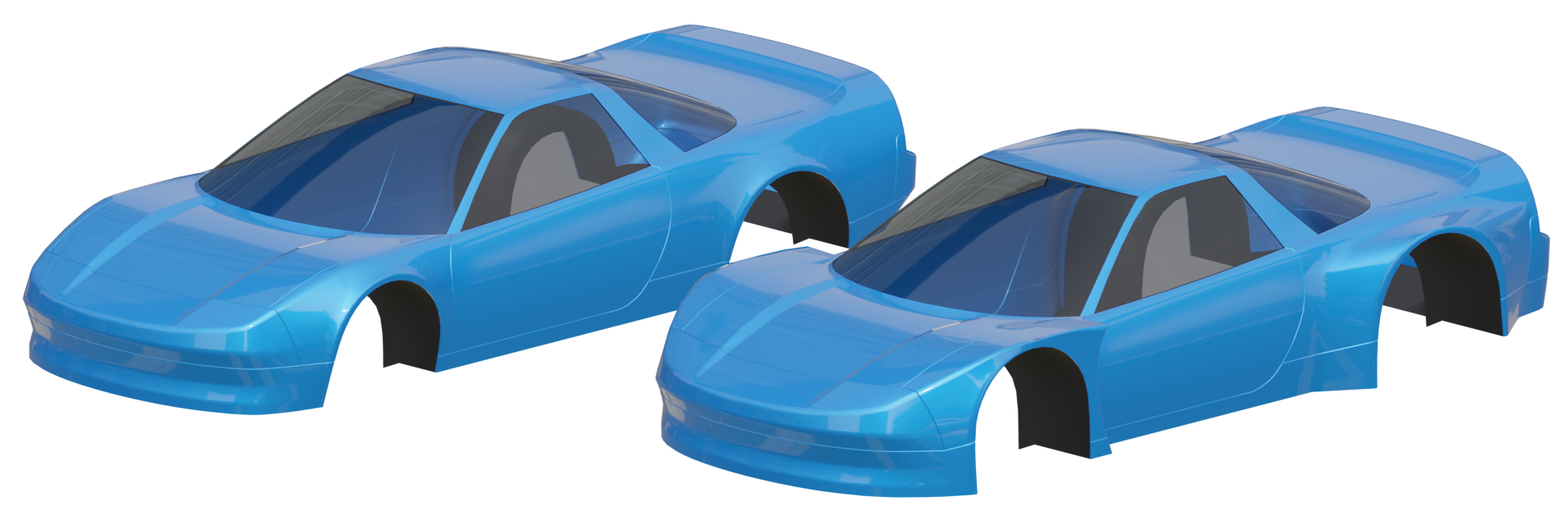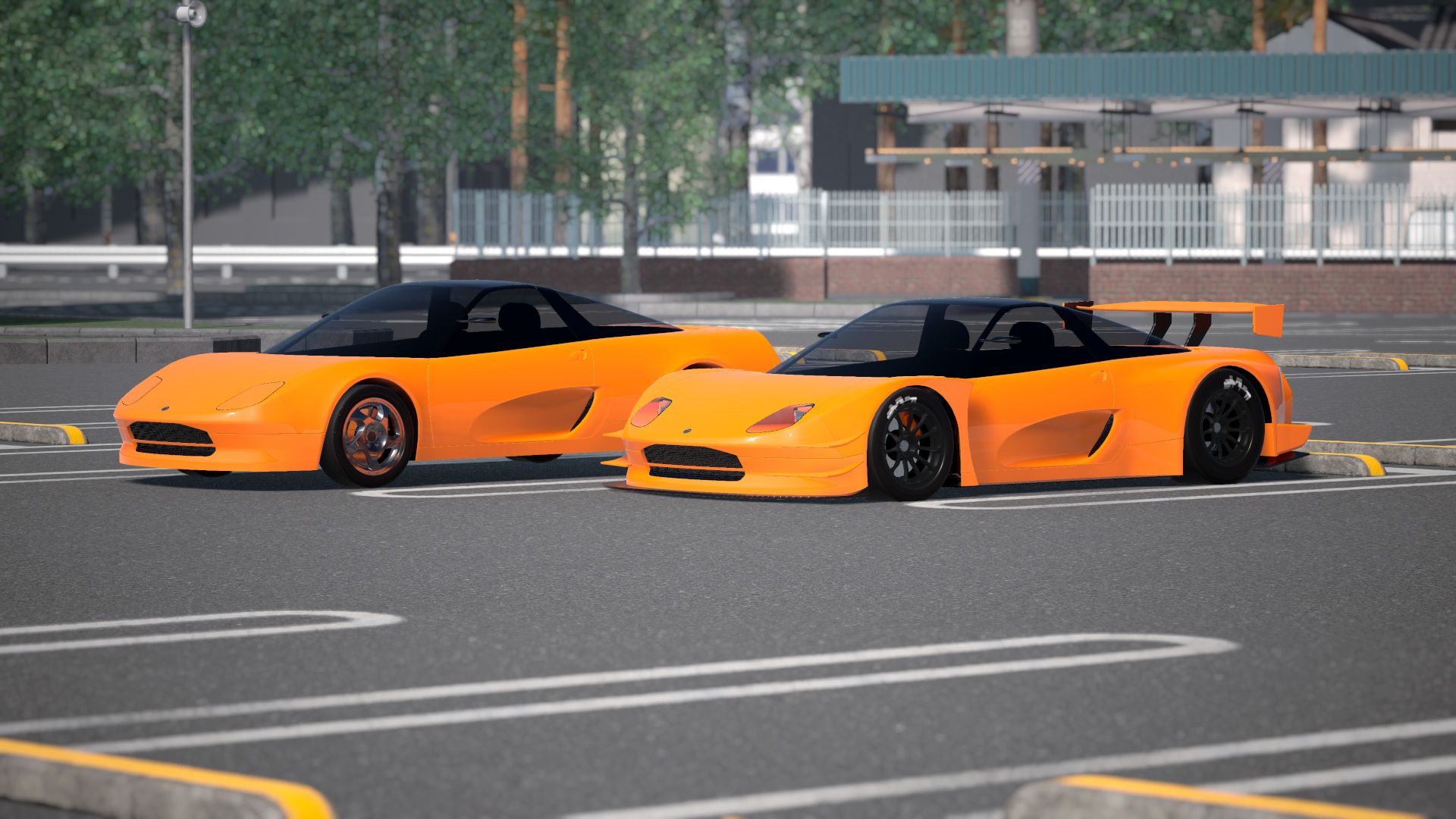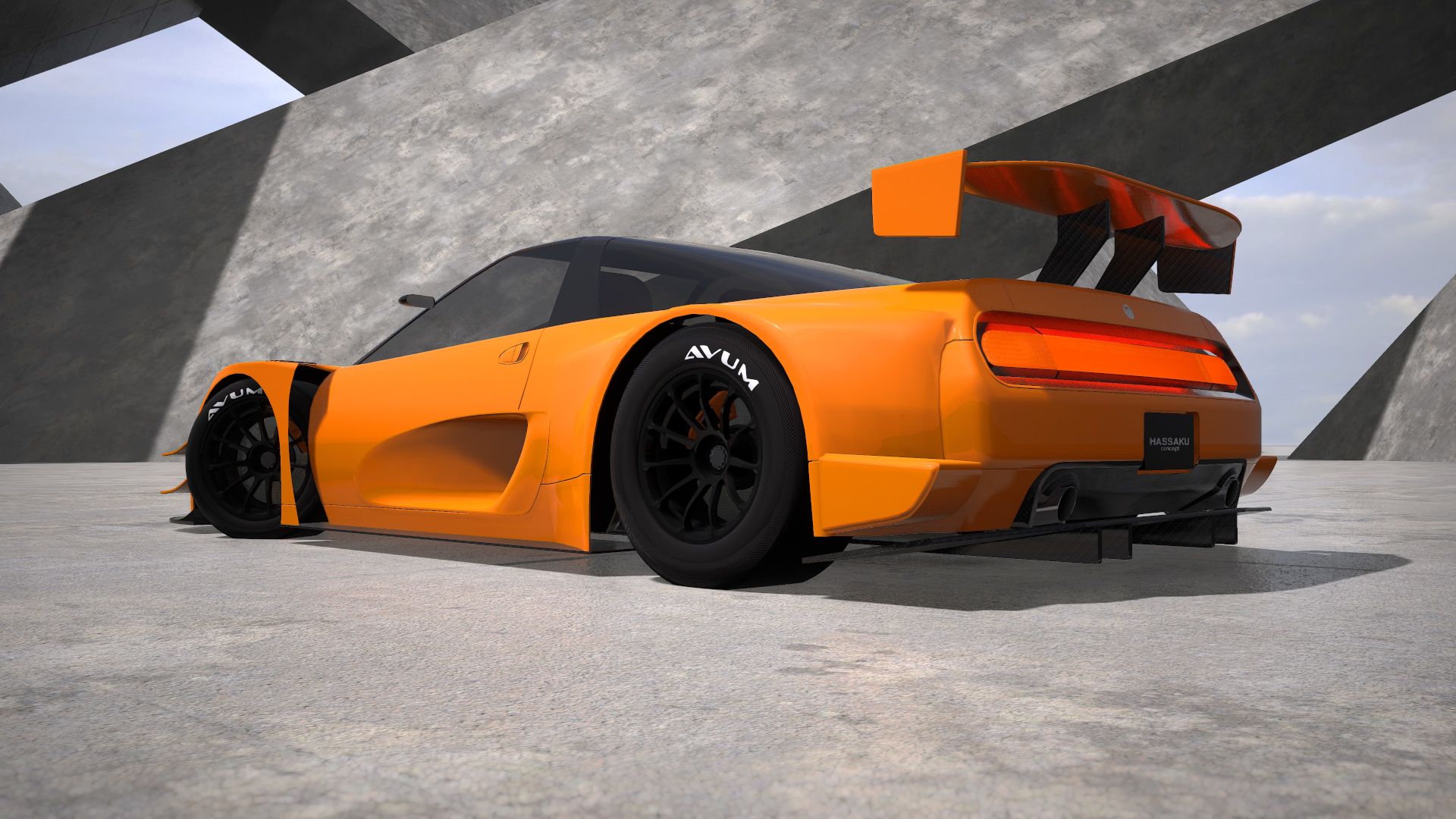Overview
For my next Automation body remake, I wanted a go at something coupe-based, since my previous two contracts were for an MPV and a hatchback, respectively. Work thus began on a remake of Automation's first-generation Honda NSX body; its age was showing, with only two wheelbase variants and one shape variant each (the standard fixed-roof coupe). This was expanded on with two additional wheelbases, three additional shape variants (two of which are convertibles), and a separate reproportioned variant set with a longer hood and rearward-set cabin.
The "Bossa Nova" name can be attributed to the genre's presence in Gran Turismo, in which the NSX is also a series mainstay, as well as Brazilian then-Formula One World Champion Ayrton Senna's involvement (however brief) in the car's development.
Available in vanilla Automation

Kei "shooting brake" concept build (Automation)

Difference in proportions between "mid-engine" (top) and "front-engine" (bottom) variants
Variants
During research into additional shape variants to complement the coupe, I stumbled upon this interesting design for an NSX shooting brake (coupe-based wagon) by Takuya Yura of Mooncraft. While the body shape of "Yura's Model" is ostensibly similar in principle to the Ferrari 250 GT "Breadvan" and the Mazda RX500 (being primarily for aerodynamics), its in-game counterpart can turn the extended section of the greenhouse into a usable cargo area via an optional front-engine layout.
Another original addition is the soft-top convertible variant. Although the only official convertible option for the NSX consisted of a targa hardtop, a separate softtop variant was recommended for gameplay reasons (as Automation perceives hardtop and softtop convertibles differently from a stats perspective). The base of the soft top begins at the same point on the trunk as the base of the rear window on the regular coupe (instead of further forward by default), as there is a morph to adjust the body's notchback proportions.
Front-Engine Variants
While the standard mid-engine bodies allow for front-engine layouts, their front engine bays are set rather forward and primarily intended for transverse FF drive layouts. While I'd already laid the groundwork for more traditional FR grand tourer proportions thanks to pillar base morphs that could easily move the whole cabin backwards, the front engine bay would remain too far forward, and moving the front firewall backwards would eat into cabin space for mid- and rear-engine layouts.
Therefore, the Bossa Nova joins the occasional trend of mid-engined Automation coupe bodies having separate variants optimized for front engines (or vice versa). The body mesh itself has only been reproportioned between the axles, with the effects of the pillar base morphs being reversed. The underlying chassis, however, has had both the front and rear firewalls moved backwards, preserving cabin space and allowing the engine to sit behind the front axle for improved handling.
Morphs
Right from the start, I wanted to incorporate the NSX's integrated rear wing as a morph. I opted to treat the shape of the wing as a single solid volume, instead of just having the two blended wing supports with a gap in between. The latter approach would simplify replicas, but would also interfere with original designs and introduce unnecessary complexity with mesh topology and other morphs that affected the same area.
Another new morph is the indent in the hood, which was hard-modelled into the old body and could not be morphed away. Now, it can also be reversed, extending upwards to create a "power bulge", and its width at the front can be adjusted.
GT500 Fenders
However, there are two morphs in particular that I wanted to implement, those being the alternate front and rear fender flare morphs. Taking after the NSX GT500 and its "road-going" Mugen NSX-RR Concept counterpart, these fenders extend both outwards and upwards for that signature silhouette race car-like stance, with the hood and front bumper area also being widened. However, these morphs are far from guaranteed to work properly with other morphs, and to fully take advantage, players are required to use the game's "advanced trim settings" to lower the suspension beyond what regular adjustment allows.
Making these morphs work was not a trivial process. The extensive scaling and reproportioning made morph targets the only viable option, and although that introduced a degree of precision impossible with bones, it did not make their implementation any less time-consuming. Differences in surface normal shading between Blender and Unreal Engine (primarily due to triangulation) also resulted in plenty of trial and error. Although I'm satisfied with the end result given the limitations of Automation car bodies, there is a thing or two I would've done differently in hindsight.

Comparison with (right) and without (left) GT500-style fender flare morphs; front bumper moulding and rear wing morphs are also active
Gallery


